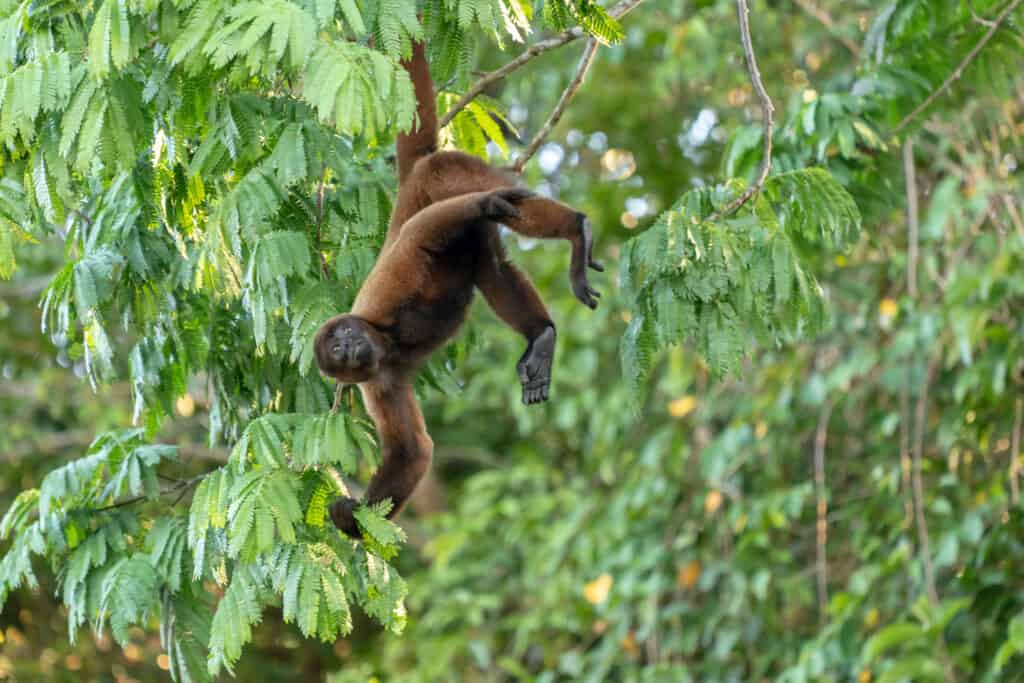The definition of prehensile in zoology is an animal’s ability to grasp objects or take hold of something. Specifically, an appendage that is adapted for clasping or wrapping around objects. Prehensility refers to the quality in which an appendage or organ can hold onto an object.
Summary

A brown woolly monkey hanging from a tree by its prehensile tail.
©Danita Delimont/Shutterstock.com
Prehensile derives from the Latin word prehendere, which means “to grasp.” This term refers to animals who have body parts that have adapted to hold onto objects to better help them live their daily lives, such as a tail grabbing onto a tree branch or a tongue used as a cleaning appendage.
Examples and Uses of Prehensile Appendages
The most common prehensile appendages are hands, feet, tails, tongues, noses, lips, and tentacles. The hands and feet of most primates are considered prehensile to some extent, as well as raccoons who can use them to open things and eat. The feet of most perching birds are also prehensile because they use them to clasp onto branches.
Primates have prehensile tails, as they use them to swim from tree branches, much like they would their arms. Seahorses also have prehensile tails because they use them to grip seaweed.
The tongue of a giraffe is prehensile and it uses it for many things, such as grasping and pulling food from a tree or grooming and cleaning themselves. Because this animal does not have limbs it can use for everyday maintenance and feeding, its tongue has adapted to serve most of its needs.
The tentacles of octopuses, squid, sea anemones, and more can be used to grasp and move objects. Octopuses and squid use their tentacles to envelop and shovel their prey into their mouths.
Many animals, like horses and orangutans, can also use their lips as prehensile appendages. These animals can grasp, feel, and move objects with their lips.



